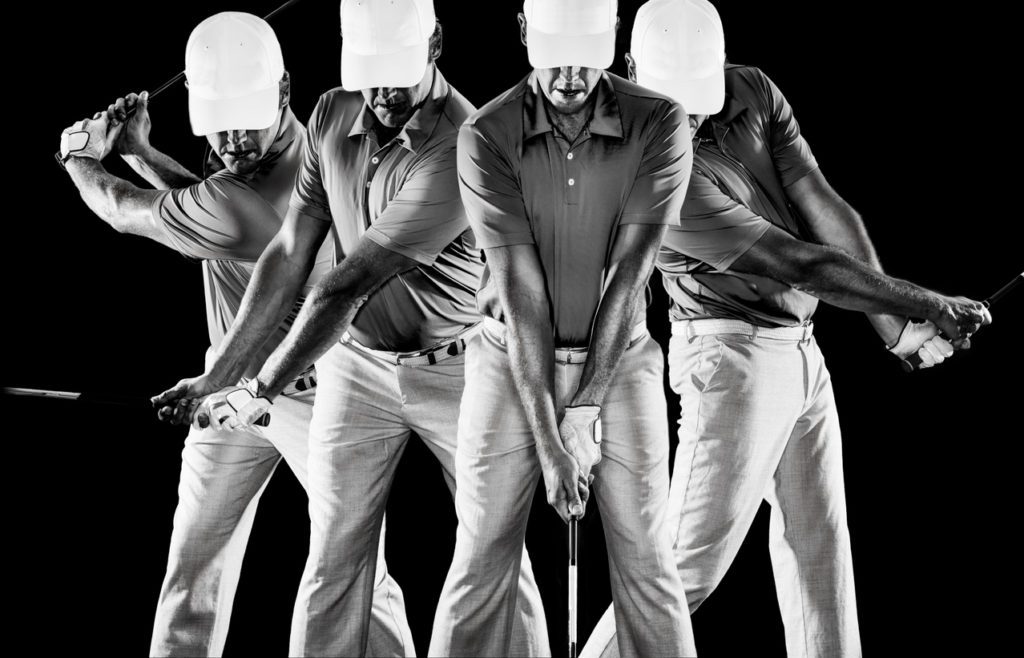
The characteristics of your swing that could be impacting the success of your game, but more importantly, could be the cause of injury. Understanding these characteristics is best way to make sure you stay in the game.
S Posture – too much arch in lower back at set up leads to overuse of lower back muscles and inhibited gluteal/abdominal activation and makes the spine very susceptible to an injury
C Posture – rounded or slumped at set up can limit rotation (the turn) drastically and can lead to poor golf shots and injuries to other areas in the body.
Loss of Posture – alterations from the body’s original set angels during the golf swing; effects rhythm, timing, and ball striking (blocks and hooks) and causes excessive stresses on low back and hips.
Flat Shoulder Plane – a normal shoulder turn should be perpendicular to the to tilt of the spine, flat shoulder plane occurs on a more horizontal plane making it difficult for the golfer to stay down and attack the golf ball
Early Extension – hip and spine extend way too early in the downswing causing the golfer to be very upright for ball striking and not clearing hips for a good angle of attack; this swing can effect the entire lower body and lead to serious lower back issues
Over the Top – (most common swing flaw among high handicappers) described by club path being over the desired swing plane making it very difficult to produce power and control
Sway – excessive lower body movement laterally away from desired target making it very difficult for a proper weight shift ultimately resulting in loss of power and control, sway can contribute to low back pain, hip/knee/ankle injuries
Slide – lower body lateral movement toward the target causes an unstable base for power and speed through the golf swing, lack of strength in hips and core can lead to slide
Reverse Spine Angle – excessive upper body backward bend or lateral bend to the wrong side in backswing making it very difficult for the lower body to initiate the downswing, big area of concern for low back pain and lead lower extremity issues
Hanging Back – improper weight shift from back leg to lead leg, results in premature release of wrist angles making it difficult to create power and good ball striking; may lead to back leg injuries
Casting/Early Release/Scooping – premature release of during the downswing and through impact resulting in a very weak impact position and creates very inconsistent ball striking
Chicken Winging – break down of lead elbow through impact making it tough to create speed and power and puts a ton of stress on the lead elbow and shoulder
Contact VIP PT today for a swing consultation.

Recent Comments